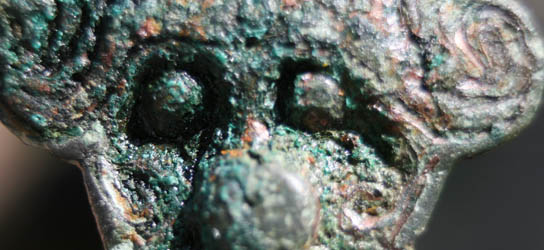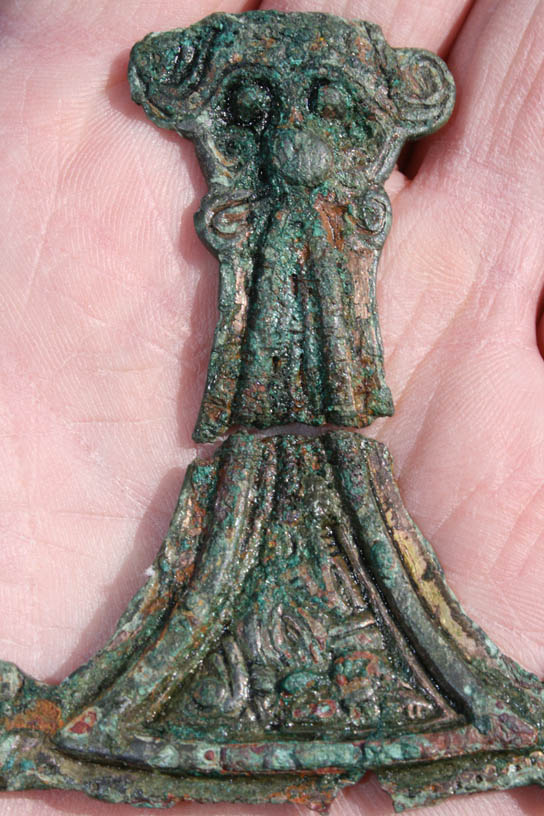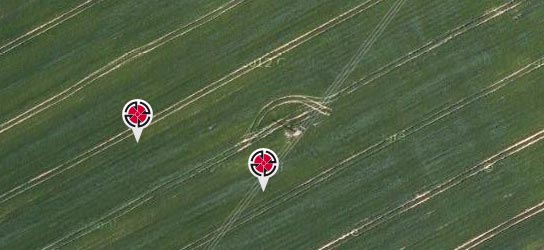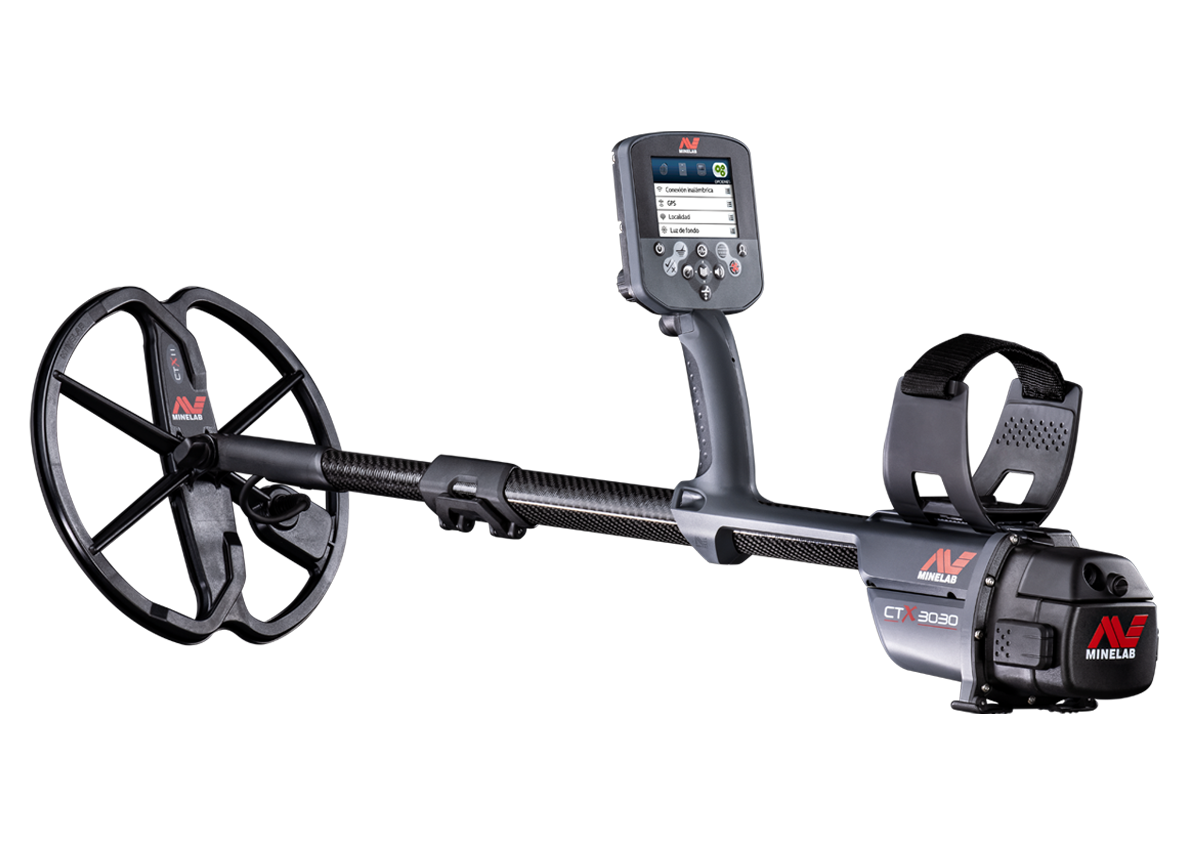Sometime in the last 1500 years a beautifully decorated and richly gilded Saxon artefact was sadly broken in half. Most likely through intense agricultural activity the two pieces were then scattered further apart over the passing centuries. Or, who knows, perhaps originally a Saxon noble threw away the broken artefact in anger after he snapped it, or did a mighty warrior and his horse crash to earth, smashing off the ornately decorated artefact un-noticed amidst the violent actions of a long forgotten and unrecorded battle?
See, this is just how metal detecting can get ones imagination all fired up! Pondering, wondering and considering your finds, healthily stretching your mental capacity into areas you had previously never even considered... and without a metal detector, doubtfully ever would.
Fortunately, over the last 1500 years, the precious object was not turned into a complete jigsaw of fragments, but remained in just two sections. But just how is it that I am able to even make these observations and suggestions about something like this? Well I was searching the same site (refer to my last blog) on my first day detecting with the CTX 3030. Two hours later, after over 15 targets of lead dross and shot gun tips, there came a really defined signal. Digging down about 9 inches I could see the green flaky coating on an ancient piece of bronze. Carefully extracting it I could see it was the top section from an Anglo Saxon bridle fitting, showing a bulged eyed and moustachioed face design.
 Anglo Saxon bridle fitting
Anglo Saxon bridle fitting
Around 45 minutes later, I was just over 200 metres away from the find spot of the Saxon bridle fragment, when another signal was received. Once again, carefully digging about 9 inches down, I could see that same green corrosion from ancient bronze. I was very surprised to see this latest find. The CTX 3030 had located another fragment of Saxon bridle fitting. Its design looked familiar so I reached into my finds pouch and withdrew the previous find for examination. I was truly amazed to see that both parts fitted exactly and indeed now constituted a complete object.
The CTX 3030 had resolved and completed a 1500 year old Saxon puzzle!
Furthermore, the break was one that had happened in antiquity so the chances of finding the missing section had been even further reduced. When the two bits are correctly positioned it does actually look like the little face is sticking a huge tongue out. However, if anyone was sticking their tongue out at the situation I guess it was me... at the incredible odds of achieving these two finds from a site that’s been searched on for 40 years.
 Complete Anglo Saxon bridle fitting
Complete Anglo Saxon bridle fitting
For many years I have logged all my finds in my head, not wanting the inconvenience of carrying separate GPS equipment. However, now this is incorporated into the CTX 3030, recording find spots is now a fluid action. By switching to FindPoint I could record the exact two locations of the bridle fitting. Using the XChange 2 application, I later uploaded the FindPoints onto Google Maps.
 FindPoints recorded on XChange 2
FindPoints recorded on XChange 2
Now I can not only share my information with fellow detectorists, I can also share it accurately, as well as maintaining impressive digital records of every area that I search from now on. Instead of saying to colleagues visiting a site "It`s worth checking up the top end of the field for coins” I can now show them exactly where to investigate. The information that such records will eventually yield and what other sites such information may also reveal is something that can only be guessed at... but it will certainly happen. Thus providing us with limitless opportunities for the sharing of information, how good is that!? Most certainly a factor that will lead to the general increase and successful finding of many more buried historical artefacts, something which will massively enrich the knowledge of our past history and heritage today, thus ensuring its preservation for tomorrow.
For some of my next CTX 3030 related blogs I shall be examining more of what this unique metal detector can offer, in more detail, as well as assessing the potential based on these abilities.
Julian Evan-Hart





















Comments